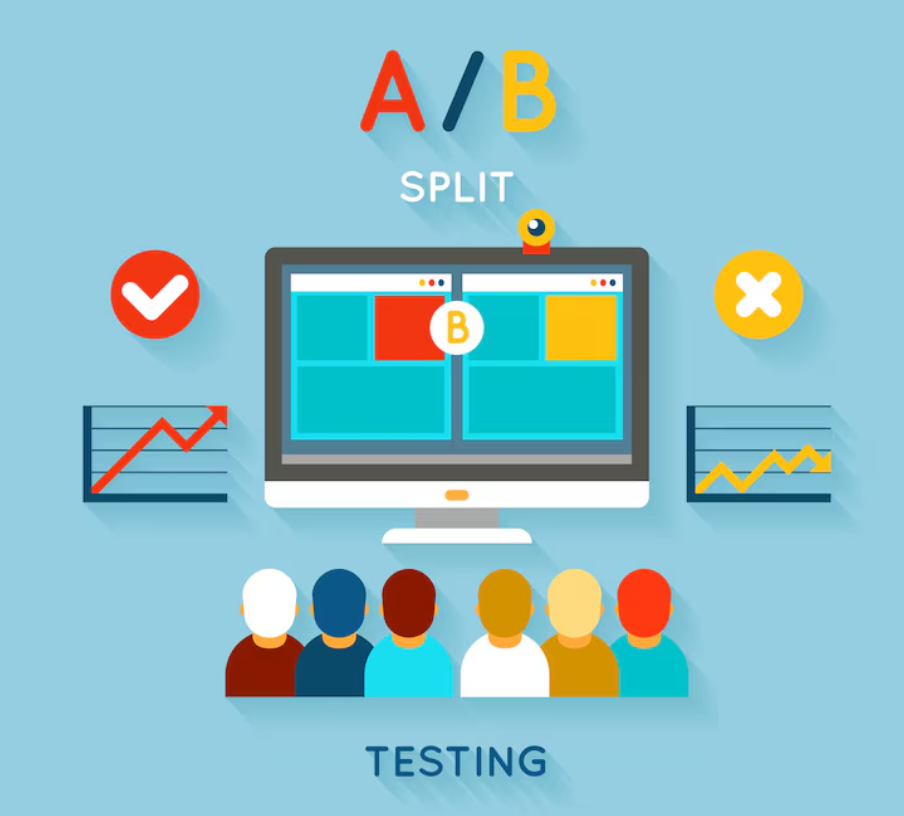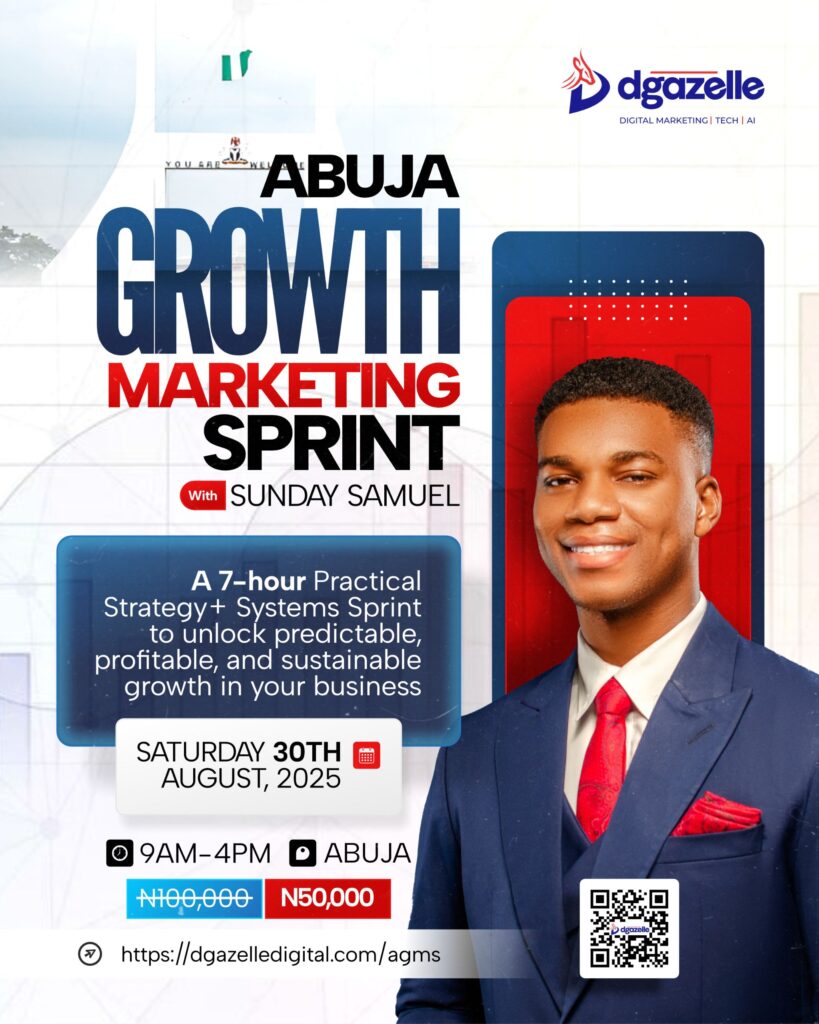Before launching your campaigns, it’s a good idea to create many variations of anything. This is where A/B testing comes into play. It aids in optimizing the success of marketing initiatives designed to increase website visitors.
Many marketers are not using A/B testing effectively, despite the fact that it is one of the most effective and proven techniques to evaluate your marketing efforts and conversion funnel. What do they not have? Is it worthwhile? We are available to address any additional queries you may have!
What is A/B Testing?
Simply said, A/B testing is an experimental procedure that compares two versions of website elements, such as a landing page, exit-popup, sidebar, navigation menu, or any other marketing asset, in order to assess the performance differences. It is also known as split testing or bucket testing.
To determine which version of the element maximizes conversions and drives the selected business metrics, different segments of website users are presented the two versions of the element. Let’s examine the specifics of A/B testing.
Why Is A/B Testing Actually Necessary?
The first step in marketing is to create a website or landing page. After the design is complete, you must choose the strategies that will boost sales and conversions. Here’s when A/B testing comes in handy. A/B testing can benefit your company in the following ways:
- A/B testing helps you improve your sales and lead generation by showing you which version of an asset, such as a CTA button, headline, or form works better.
- It is easy to run, unlike a multivariate test that requires substantial expertise and set-up time.
- Even a failed A/B test gathers important information to help you improve the next iteration.
- A/B testing improves your most important metric: conversions.
One of the most popular methods for conversion optimization nowadays is A/B testing. Its growing popularity is matched by the expansion of tools for conducting A/B testing and analyzing the outcomes.
Key Elements of A/B Testing for Higher Conversions
Not all A/B testing components yield the same results. To boost conversions, focus on testing impactful elements.
Call-to-Action (CTA): Your CTA drives action, influencing whether visitors purchase, sign up, or engage further. Test variations like background color, text, and placement to see what improves conversions.
Headlines & Copy: Headlines are the first thing visitors see. If they aren’t engaging, visitors may leave. Ensure they are concise, attention-grabbing, and clear. Test different fonts, styles, and messaging to find what resonates with your audience.
Popups & Overlays: Popups can be effective when used correctly. Test different designs, copy, and animations to find the best balance between grabbing attention and avoiding annoyance.
Subject Lines: A compelling subject line is critical for email marketing success. With an average open rate of 22%, experiment with phrasing, questions, emojis, and power words to boost email open rates.
Images & Videos: Visual content is a major marketing tool, with 49% of marketers considering it essential. Test different visuals, such as infographics, videos, and product images, to see what enhances user engagement.
Landing Pages: Landing pages are vital for promoting products and services. Use heat maps to track user clicks and test different layouts, product descriptions, and testimonials to optimize conversion rates.
Social Proof: Reviews and testimonials are powerful conversion tools. Test various forms of social proof, such as star ratings, customer quotes, or badges, and experiment with their placement and format to find what works best for your audience.
Types of A/B Testing
After covering A/B testing, let’s explore other testing methods.
Split URL Testing: Unlike A/B testing, where minor front-end changes are made, split URL testing involves designing a completely new version of the web page. Traffic is divided between different URLs to compare their performance, helping determine which version converts better.
Multivariate Testing: This method tests variations of multiple page elements simultaneously to find the best combination. It’s more complex and ideal for advanced marketing strategies, allowing marketers to save time by testing multiple elements at once.
Multipage Testing: This type of testing evaluates changes to specific elements across multiple pages. In Funnel Multipage Testing, entire sales funnel pages are redesigned and tested. Classic Multipage Testing focuses on adding or removing specific elements like testimonials or images to assess their impact on conversion rates.
These testing techniques offer more advanced options for optimizing website performance, complementing traditional A/B testing.
Step-by-Step A/B Testing Guide to Improving Lead Generation & Conversions Rate
A/B testing offers a methodical way to determine which of your marketing campaigns performs better. But it must be carried out using a clear procedure. The following procedures are part of the A/B conversion rate testing.
Select a variable and establish objectives and KPIs
You have to conduct research and make conclusions before you can conduct an A/B test. You can test as many aspects as you like, but you must first prioritize which elements should be examined first by choosing those with the highest payout. To ensure that every version is handled equally, you have to configure the test’s parameters.
After determining the variable, you must select your success metric. Are conversions your goal? Shopping cart disappearance? Rate of bounces? Sales? When choosing the objectives and carrying out your tests, you must eliminate as many “gut feelings” and presumptions as you can. Predefining your constants and variables can help you focus on the right things and prevent you from seeing misleading results.
Choose the Page and A/B Test Elements
Start with the most significant or popular webpage you have. This might be your best-performing landing page or homepage. Whichever path you take, make sure it’s directly related to your metrics. Once the page has been chosen, analyze every element to see what can be enhanced, including the navigation menu, popup window, CTAs, images and videos, reviews, case studies, and so on.
Make sure you make a small change to the current content to observe how it affects metrics. Prioritize the pieces based on what you believe will have the biggest impact on conversions.
Produce Alternatives
Make a variation based on the above hypothesis and compare it with the existing version. To improve your analysis of the findings, just make the changes you decided upon in the previous stage, and only one change at a time.
For instance, alter the button size, text, font, color, and CTA when testing your popup window. You can then modify the backdrop picture or input areas. Keep everything else exactly as it was in the popup window. By adjusting one component of your variable at a time, you can test it with the control (your initial design) and generate several versions.
Select the Tools for A/B Testing.
It is not possible to test every aspect with one A/B testing tool. Your sales/marketing software will include built-in testing tools that you can use, depending on what you’re testing. Using heatmaps and recording/replay capabilities, these tools enable you to customize your testing campaigns by analyzing user behavior.
Dgazelle provides A/B testing with sophisticated analytics for exit popups. Similar to this, you can measure visitor movement and conversion data for email marketing campaigns and landing pages by using tools like Crazy Egg and AB Tasty.
Run The Test
You may notice different options for gathering data, such as device kind, location, and other details, depending on the tool you’ll be using. Here, you must enter the duration of the test that you wish to execute. You can determine the test’s duration and scheduling based on your average website traffic.
When tested against the same percentage of traffic, this aids in tracking metrics such as progress in conversion rate relative to the control. Only if you properly configure these options will you receive more accurate results.
Examine A/B Testing Outcomes and Data & Implement
Draw inferences from the data you obtain. In addition to determining the winner, the analysis is crucial for acquiring information about the many components you A/B test. Think about all the indicators, such as revenue growth, bounce rate reduction, conversion rate increase, etc. Use that version if the test is successful and you have determined who won (A or B).
In this case, the results could be deemed inconclusive or indicate a failed test if you receive comparable conversion rates. It occurs frequently and is not alarming. Take what you learned from it and use it to improve conversions in subsequent A/B testing.
After completing these six easy steps, start with a different step and complete the process again.
Conclusion
Until you test a change that you think will improve a page’s performance, you have nothing to show that it could perform better. If you never test anything, you’ll never find out that adding a picture of a person to your page can increase conversions by 60%. or that click-through rates would increase if the CTA button said something other from “Click Here” or “Submit.” You now know what to do thanks to this thorough instruction.
Make sure the sales and marketing solutions you use have sophisticated A/B testing capabilities along with thorough reporting and analytics. It’s time to get going now that you are fully informed about AB testing conversion rate optimization strategies!
GET IN TOUCH
Don’t wait to see the results! Start implementing simple A/B testing strategies today and watch your conversions soar. Take the first step toward optimizing your e-commerce store for success.







